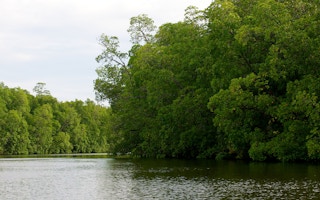CIFOR is pleased to release its new strategy, to guide us through to 2025. The document is the result of 18 months of consultation and deliberation, as CIFOR staff worked with partners and networks to redesign our pathway to impact.
In the process, we have also given much consideration to what we mean by “forestry”.
Throughout its 22-year history, CIFOR has consistently adopted a broad approach to forestry research, with our work organized according to such domains as livelihoods, governance, forest management and climate change. In crafting our new strategy, we have built on this tradition and reinforced it by aligning our structure with the global development and climate frameworks that were established in 2015.
And at the heart of our strategy is our vision: a more equitable world where forestry and landscapes enhance the environment and well-being for all.
We believe that aligning forestry with all 17 Sustainable Development Goals (SDGs) will help elevate the contributions forestry can make across the development agenda in support of this vision. We also think this creates a way to communicate the importance of forestry to a much wider audience, and ensure that forestry, and all that it entails, continues to capture public and political interest.
In other words, we want to redefine “forestry” to mean “all contributions to sustainable development that are made possible through forests and trees”.
Few would argue with the proposition that forests and trees provide a very wide range of benefits in the form of forest products and services. Global or local, for poor or for rich, monetary or intangible, these are benefits in which we all partake.
We want to redefine “forestry” to mean “all contributions to sustainable development that are made possible through forests and trees”.
But perceptions and valuations of forest products and services vary a lot.
If you ask, say, Europeans about their current view, they might argue that forests exist almost entirely for the purpose of conserving carbon and wildlife. This is a somewhat simplified and limited perspective that appears to mainly represent nature preservation interests.
If, instead, you ask those that depend on forests worldwide, a much more nuanced picture emerges. After all, a range of forest products and services provide direct and essential income and livelihoods to more than a billion people.
Then again, if you direct the question toward forestry industry representatives, it is the market value of pulp, paper and wood products that counts most.
Forestry, therefore, is about understanding the full range of these values, and finding effective solutions across multiple benefits, for various stakeholders, and over time.
The process of designing the post-2015 development agenda and the SDGs afforded us ample opportunity to reinforce this multifaceted role of forestry. For example, during the UN negotiations, CIFOR scientist Dr. Daju Resosudarmo was invited to advise countries on the essential contributions of forestry to sustainable development. Throughout the UN talks, CIFOR continued to reinforce the broad role of forestry as contributing to all aspects of sustainable development.
In the new CIFOR strategy, we align our approach to work with the SDG framework. The CIFOR 2016–2025 strategy illustrates explicitly how forestry can come out of the “environment” corner, and other limited parts of the framework, to contribute to achieving each of the 17 goals. We open up the forestry box and seek to collaborate closely with other sectors, work with a landscape perspective, and integrate mainstream development priorities into our research.
So this is forestry: Redefined for sustainable development. Firmly linked with other sectors. Involving everyone.
And with this redefinition and broader understanding, forestry will have a much greater reach, and much greater opportunities for impact.
Peter Holmgren is the director-general of CIFOR. This post is republished from the CIFOR Blog.


















